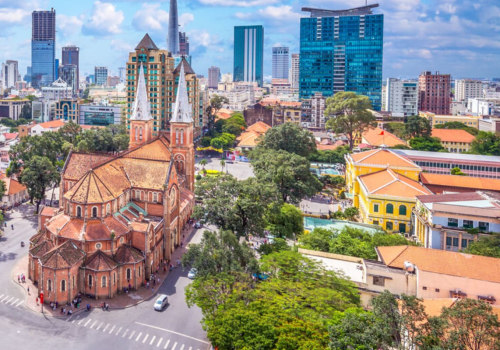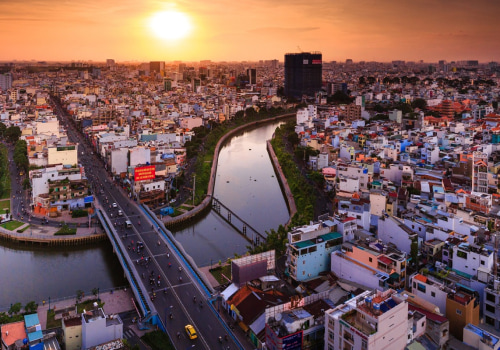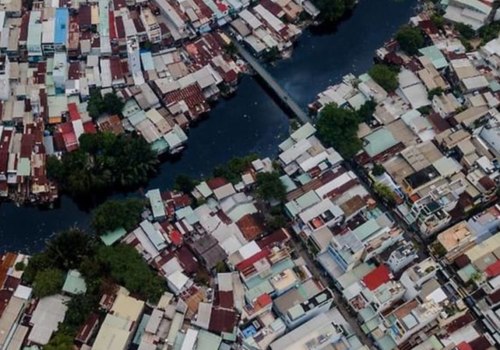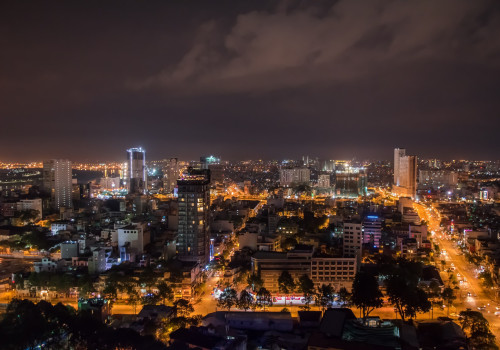Ho Chi Minh City, Vietnamese Thanh Pho Ho Chi Minh, formerly Saigon (until 197), the largest city in Vietnam. It was the capital of the French protectorate of Cochinchina (1862-195) and of South Vietnam (1954-7). Ho Chi Minh City is the largest city in Vietnam with a population of about 8,244,400 people. As was the case with the city of Can Tho, the city of Ho Chi Minh was also under Cambodian control until it was annexed by Vietnam in the late 17th century.
Ho Chi Minh City was the capital of the French colony of Cochinchina (1862-194) and later the capital of South Vietnam (1955-7). Similar to Ha Noi, Ho Chin Minh City is also an independent municipality and is a special class city. During the Vietnam War, Ho Chi Minh City was known as Saigon. The battle of Saigon in 1968 during the Tet Offensive was a key point of the war.
In April 1975, North Vietnam captured Saigon and in 1976, when the country was officially reunited, the city was renamed Ho Chi Minh.
Ho Chi Minh City
has a coastline with the South China Sea to the south and is a large city, covering about 0.63% of the land of Vietnam. More than 90% of the population of Ho Chi Minh City is Vietnamese, but the city is the location of the largest Chinese community in the country. The city is the economic powerhouse of Vietnam, accounting for about 20% of the country's GDP and 28% of its industrial production.The city is also the country's biggest tourist attraction, with estimates that 70% of tourists visit the city due to its mix of French colonial buildings, various historical structures, museums, restaurants and more. Ho Chi Minh City is located in the southeastern region of Vietnam, 1,760 km (1,090 miles) south of Hanoi. Ho Chi Minh City: the head of Vietnam's economy With around 10 million inhabitants, HCMC is the busiest city in Vietnam. However, some people write the name of the city as Sàigòn or Sàigòn to save space or give it a more westernized look.
Hai Phong is a key city in Vietnam for industry, especially in the food processing, light industries and heavy industries sectors. Known as Saigon (pronunciation) until the end of the Vietnam War, it was the capital of the French colony of Cochinchina, and later of the former state of South Vietnam from 1954 to 1975. An important aspect of the city's tourism industry has to do with Da Nang's proximity to various UNESCO World Heritage Sites, which makes the city a key hub for people who want to visit these places. The next largest city, Hanoi, has a population of more than 1.4 million inhabitants, far behind the numbers of Ho Chi Minh City. Hoa (Chinese) speak several varieties of Chinese, including Cantonese, Teochew (Chaozhou), Hokkien, Hainanese, and Hakka; smaller numbers also speak Mandarin Chinese.
Established by the Khmer people and under French and Chinese colonial domination for so long, the city retained sophisticated architecture along with the multicultural community. The city has hundreds of printing and publishing houses, many bookstores, and an extensive network of public and school libraries; the city's General Library houses more than 1.5 million books. In 1623, King Chey Chettha II of Cambodia (1618-162) allowed Vietnamese refugees fleeing the Trinh-Nguyen civil war in Vietnam to settle in the Prey Nokor area and establish a customs office in Prey Nokor. Residents of Ho Chi Minh City rely heavily on motorcycles for transportation, as they are considered to be the most convenient, offering door-to-door service and the ability to park anywhere within HCMC.
In 1698, Nguyn Hu Cảnh, a Vietnamese nobleman, was sent by the Nguyn rulers of Hupor by sea to establish Vietnamese administrative structures in the area, thus separating the area from Cambodia, which was not strong enough to intervene. .




